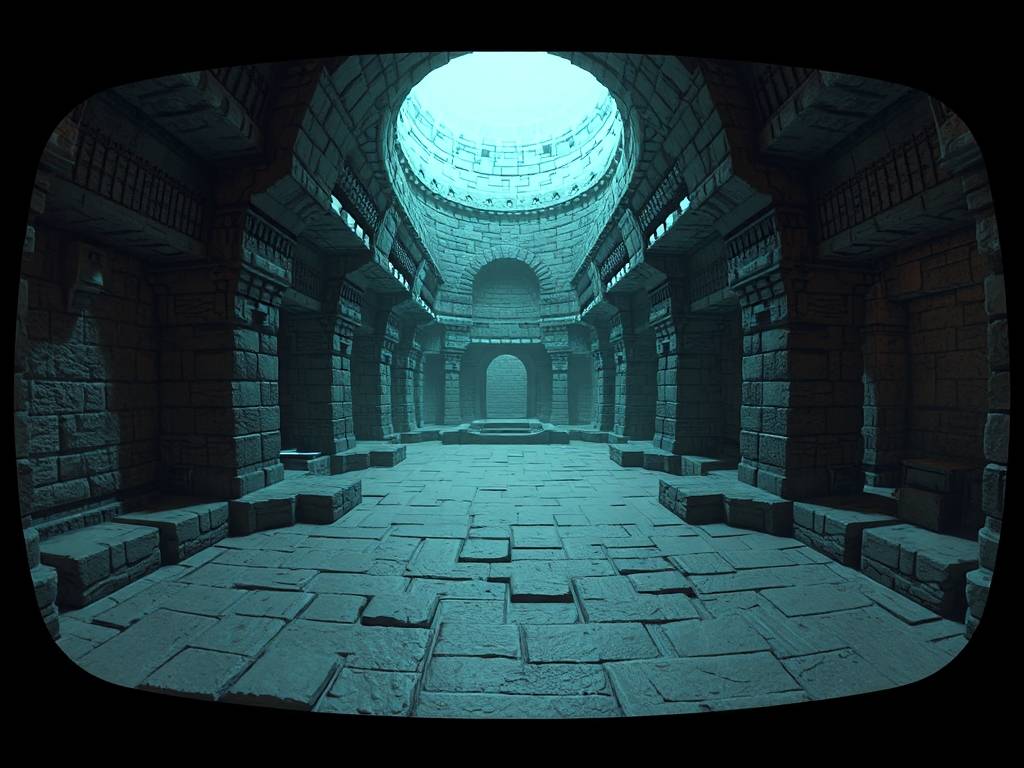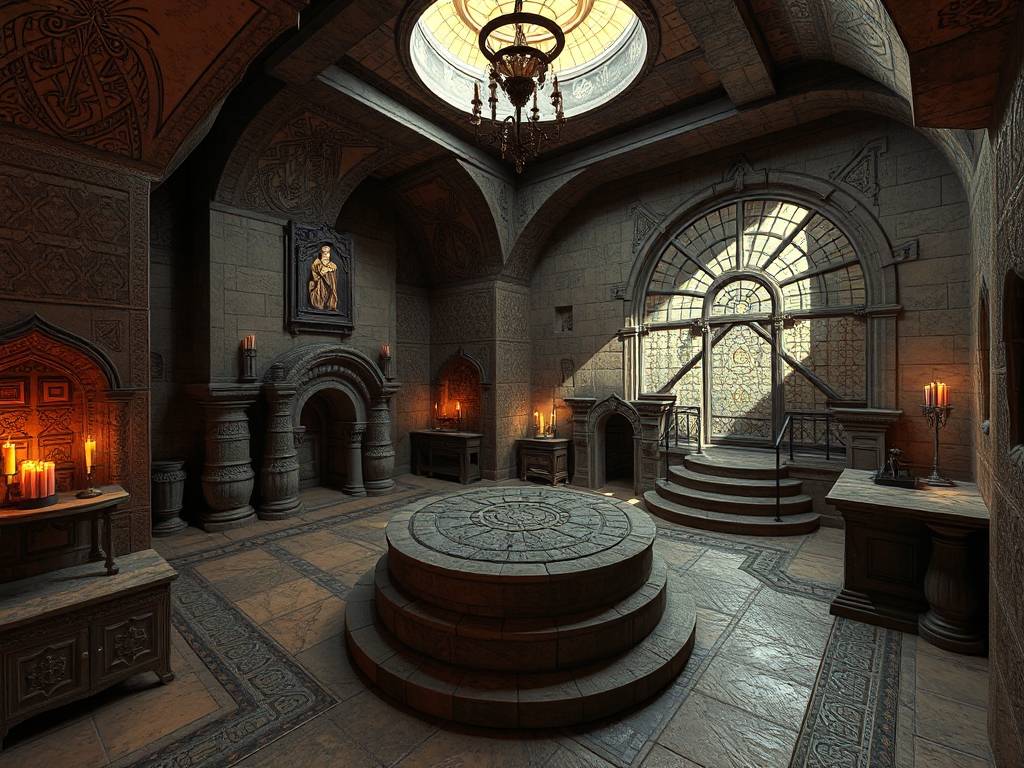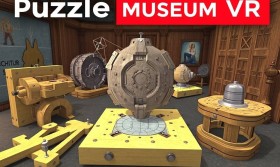A Walk Through Time: The Labyrinth Museum VR's Groundbreaking Historical Designs Update
Imagine standing in the very heart of the Roman Senate as Caesar’s fate is decided, not as a passive observer, but with the dust of the Forum on your virtual sandals. Or walking the creaking, rain-slicked decks of a Viking longship as it cuts through the North Atlantic fog, the scent of salt and pine carried on the wind. This is no longer the stuff of daydreams. The Labyrinth Museum VR, a pioneer in immersive cultural education, has just launched its most ambitious Historical Designs Update yet, transforming how we connect with our shared past. This isn't a mere patch or a few new artifacts; it's a fundamental evolution, a leap from viewing history to truly living it.
For too long, virtual historical experiences have been trapped in a kind of digital amber—beautiful to look at but static and lifeless. The common user pain points were clear: environments that felt more like sterile dioramas than living worlds, a lack of authentic sensory depth, and a passive experience that failed to ignite a genuine emotional connection. The Labyrinth Museum VR team listened, and this update is their profound answer. It’s built on three core pillars: Environmental Narrative Authenticity, Advanced Sensory Layering, and Dynamic Historical Systems. Let's delve into what this means for you, the time-traveler.

From Static Scene to Living World: The Principle of Environmental Narrative
The previous iteration of the Labyrinth Museum VR was impressive, but the new historically accurate virtual environment technology is revolutionary. The team has moved beyond simply modeling buildings and objects with precision. Now, every element tells a story. In the new "Medieval Paris: 1390" module, you won't just see Notre-Dame under construction. You'll notice the worn grooves in the stone steps of a nearby tavern, the specific, historically-attested graffiti scratched into a wall, and the unique, slightly chaotic layout of the streets that modern Cartesian planning hasn't yet touched. This is what we call Environmental Narrative Authenticity.
This commitment extends to the interactive historical architecture design. Before, you might have been able to 'click' on a famous building for a pop-up fact. Now, you can physically engage with the architecture. You can trace the intricate carvings on a Khmer temple in Angkor, feel the virtual resistance of a heavy, iron-banded door in a Scottish castle, or even help a virtual craftsman position a stained-glass window using period-appropriate tools. This hands-on history learning approach makes the architectural marvels of the past feel tangible and earned, not just presented.
A Symphony for the Senses: Advanced Sensory Layering
Visual fidelity is just the beginning. The true magic of this Labyrinth Museum VR upgrade lies in its sophisticated multi-sensory historical simulation. The developers have integrated a new proprietary engine they call "Chronos-Sense." This technology goes beyond simple sound effects to create a rich, dynamic soundscape. In the "Silk Road Bazaar" experience, the audio isn't a single looped track. It's a complex layer of distinct sounds: the specific dialect of a Sogdian merchant haggling over bolts of silk, the distant bleating of goats in a pen, the unique clink of different period-currency being counted. This immersive virtual museum experience is rooted in deep acoustic archaeology.
Furthermore, the update introduces haptic feedback integration for history, a game-changer for engagement. When you're in the "Age of Sail" exhibit, you don't just see the storm; you feel the deck heave under your feet through your VR controllers or haptic vest. The tension in the rope as you help furl the sails is translated into a palpable resistance. This virtual reality history education tool connects the body to the lesson, creating muscle memory for historical events. It’s one thing to read about the physical labor of a sailor; it’s another to feel a fraction of its exhausting reality.
Breathing Life into the Past: Dynamic Historical Systems and AI
Perhaps the most significant breakthrough in this Historical Designs Update is the introduction of AI-driven historical character interaction. The non-player characters (NPCs) you meet are no longer scripted automatons repeating a handful of lines. They are powered by a sophisticated AI that gives them daily routines, goals, and knowledge based on their social status and historical context. You can have an unscripted conversation (via voice or menu) with a scribe in Renaissance Florence about the latest Machiavelli treatise, and his opinions will be shaped by his education and the city's current political climate.
This creates unparalleled dynamic socio-economic simulations. In the "1920s New York" module, you can witness the ripple effects of Prohibition. The price of bootlegged alcohol might fluctuate based on simulated police raids. A shopkeeper's attitude towards you may change if the virtual economy enters a downturn. This system allows for experiential ancient civilization exploration that demonstrates cause and effect, showing history as a process, not a collection of frozen moments. It empowers user-driven historical exploration, allowing you to follow your own curiosity—be it tracing the route of a specific trade good or understanding the daily life of a specific social class.
Solving the Deeper Questions: Education, Preservation, and Access

This update directly addresses the "so what?" factor that often plagues educational technology. By making history visceral and personal, the Labyrinth Museum VR tackles engaging history curriculum solutions for schools. A student who has struggled to trade in a bustling Tang Dynasty market will have a far deeper understanding of global economics than one who has simply read a paragraph in a textbook.
Moreover, the platform now serves as a powerful tool for digital heritage preservation projects. Many of the sites and artifacts recreated with such painstaking accuracy are threatened by climate change, war, or simple decay. The Labyrinth Museum VR acts as a digital archive, preserving not just the look, but the feel and function of these cultural treasures for future generations. This commitment to accessible cultural heritage experiences also breaks down physical and financial barriers. Anyone with a VR headset can now "visit" places that are remote, fragile, or otherwise inaccessible, fostering a more inclusive and global appreciation for human history.
The Labyrinth Museum VR's Historical Designs Update is more than just new content; it's a new philosophy. It represents a shift from presenting history as a series of facts to be memorized, to building worlds to be inhabited and understood. It solves the core user problems of passivity, inauthenticity, and disconnection by offering a living, breathing, and deeply personal portal to the past. So, strap on your headset and step inside. A labyrinth of time awaits, and every turn holds a story not just to be seen, but to be felt, heard, and lived. The past has never been so present.
















